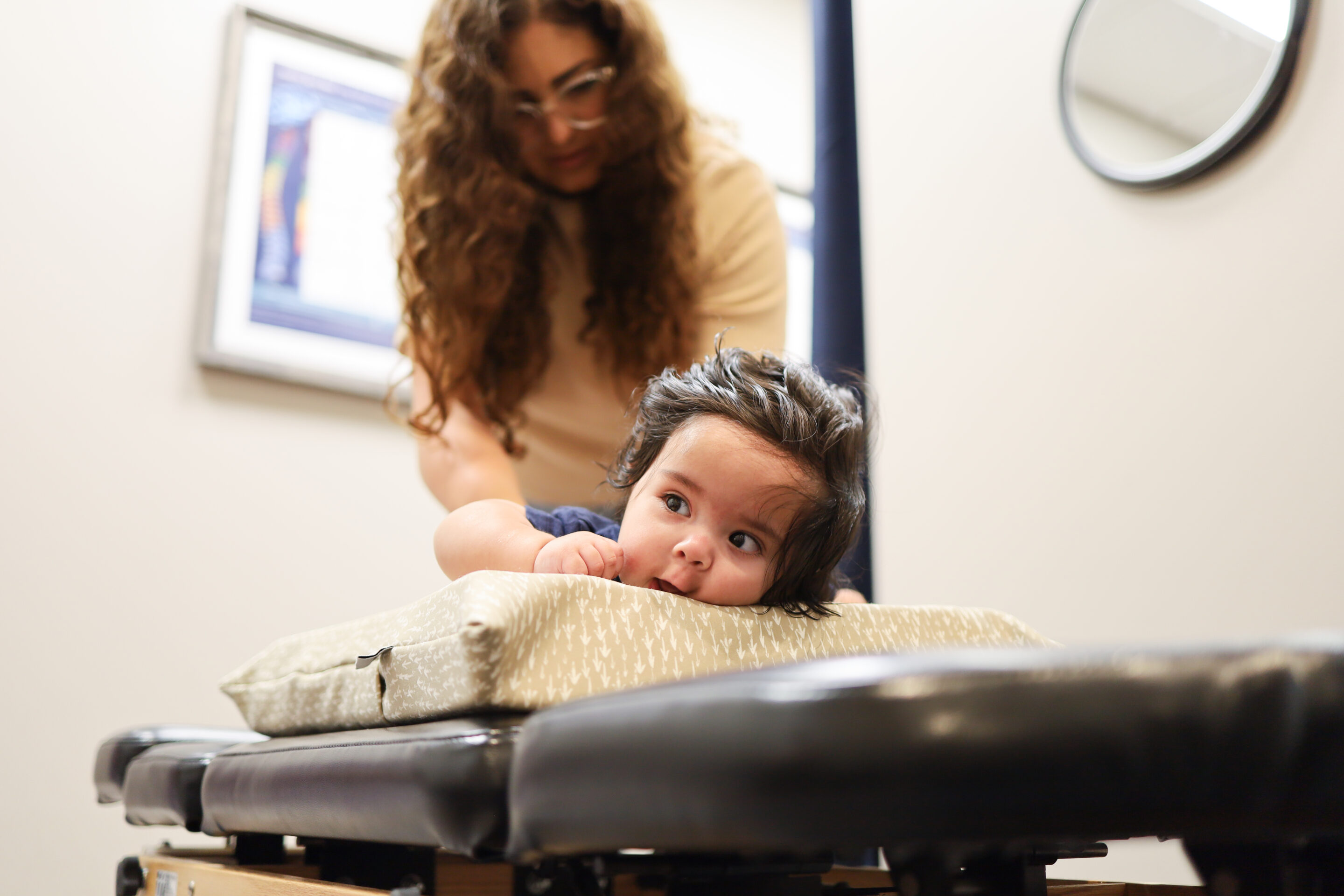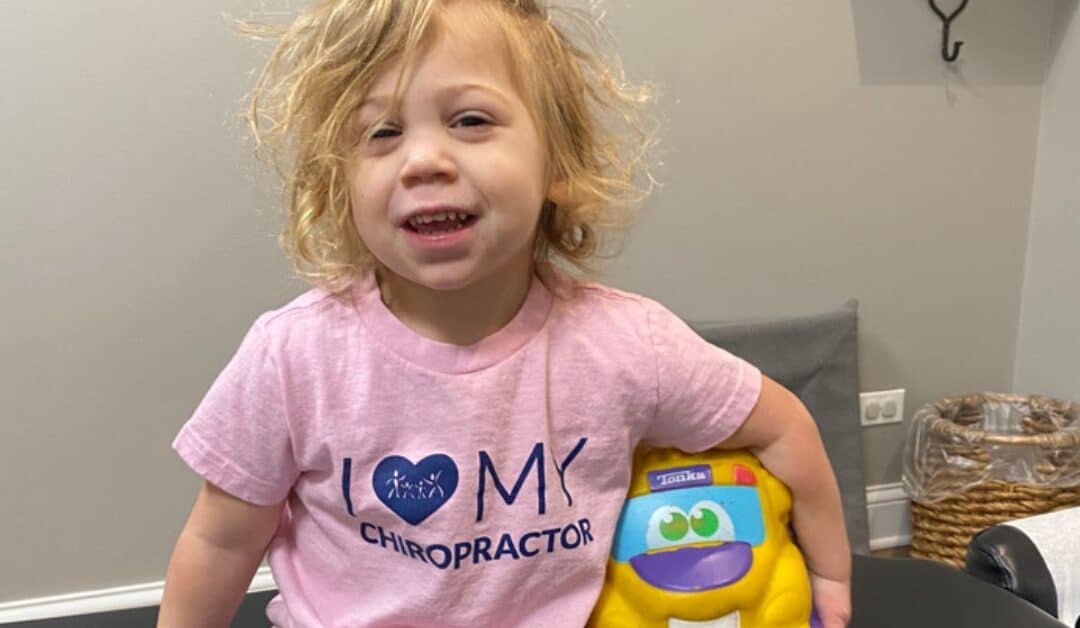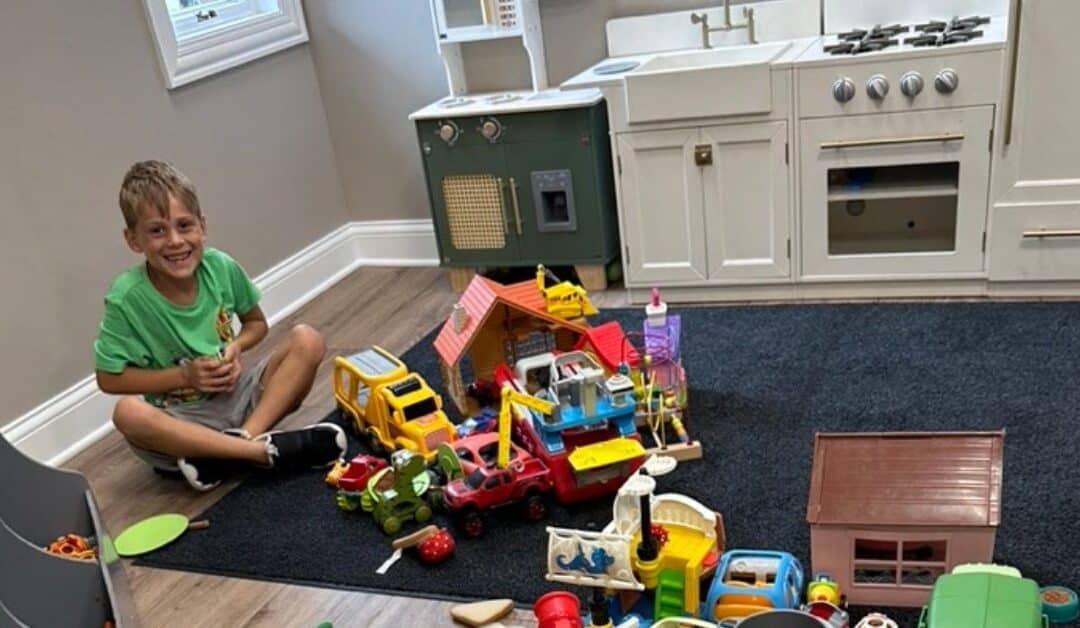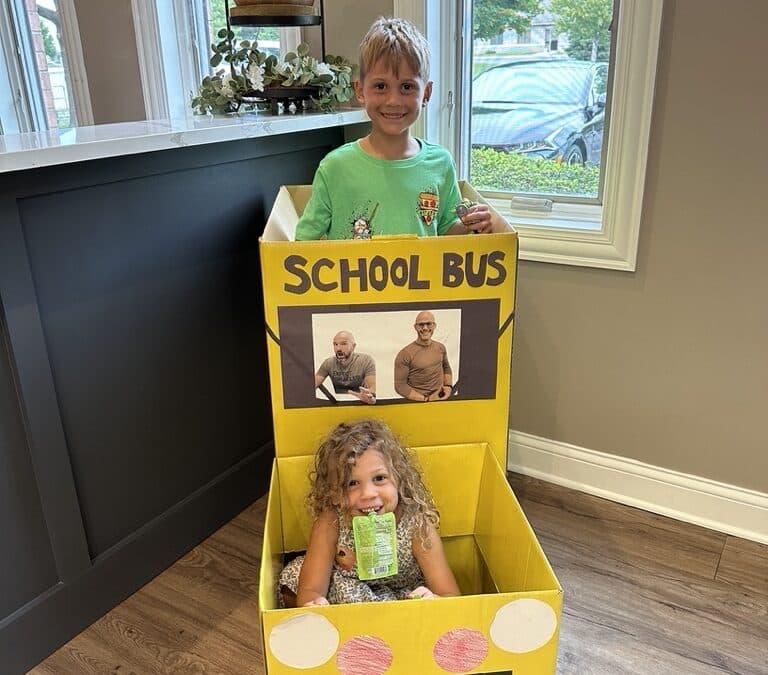“I had no idea it could make his behavior even worse. My doctor definitely didn’t tell me that – he mentioned nothing about Miralax side effects.” That was what Laura, Justin’s mother, shared with us during her initial consultation when we were diving deep into what really triggered Justin’s behavior from not good to terrible about 6 months before starting care.
Justin had battled chronic constipation since he was an infant and was now dealing with severe behavior and anger issues, even getting violent with his sister and other kids. He had already been placed on the medication Miralax and then later received a diagnosis of ADHD as well. Despite having just turned three years old, their pediatrician recommended Justin be put on ADHD medications in addition to Miralax.
Thankfully, a friend recommended that she take a look at drug-free options like Pediatric Chiropractic. Since she was more than concerned about her 3-year-old being on two different medications so early in life, she made the call to a PX Docs office and got started.
Once she researched online and learned about all the dangerous Miralax side effects, her first goal was to get Justin off of that as fast as possible!
What is Miralax?
It’s safe to say if you’re a parent whose child struggles with constipation, you’ve heard of Miralax. This over-the-counter (OTC) laxative, along with others of similar ingredients, was introduced around the year 2000.
The main ingredient in Miralax, polyethylene glycol 3350, is designed to help the digestive tract hold more water, which also pulls more water into the stool. This helps the stool pass easier, as it’s softer. Miralax most often comes in a powder to mix with water or juice and while dosage recommendations are specific for adults, it is recommended you reach out to your provider for use with kids under 17. For more information on its origin and ingredients, visit GoodRx Health.
While pulling water into the stool sounds like a natural “softening” solution, the ingredient (polyethylene glycol 3350) and its mechanism within the body certainly aren’t natural. This is where the discussion begins in terms of its usage and safety, especially when it comes to children.
Is Miralax a Safe Option for Kids?
Miralax has been a point of controversy for years after the FDA did a study and found that 167 kids taking Miralax had severe emotional/psychiatric side effects in a 2014 study reported by CBS News. This debate has continued as the FDA has failed to approve its use for kids under the age of 17. Its current use is considered off-label, and while many pediatricians recommend its use for constipation, many other sites and experts have documented common side effects that actually increase bloating, gas, cramping, diarrhea, and even additional stomach pain and pressure.
Additionally, the main ingredient, polyethylene glycol 3350, has a mechanism of retaining water that works against the body’s natural process of nutrient and fluid absorption. While altering this process may provide temporary relief, long-term working against absorption not only changes the biochemistry of the body but also the brain’s communication to our digestive system.
This communication and coordination happen primarily through the function of the Vagus Nerve and Autonomic Nervous System, which has quite a bit of development to go through from birth through the first many years of life. When there is interference and dysfunction to this development, a condition called dysautonomia occurs, and a common side effect of that is slowed digestive motility and constipation.
Developmentally, this learning of the digestive system naturally happens between 0 and 4 months, while a newborn lays the foundation with easy-to-digest breastmilk or formula. Then as the baby grows, this simple process becomes more complex to be ready for solids at six months and more diverse foods going forward.
Simply put, by following natural Developmental Milestones, the brain’s signals that begin working together, stay working together and are building blocks to the intricate balance of digestion (elimination) outward and absorption of (nutrients) inward.
What are the Side Effects of Miralax?
Every medication has its pros and cons, with solutions to issues and side effects. Surprisingly, the most commonly documented Miralax side effects are the opposite of its intended benefit, leading to increased digestive struggles. Miralax side effects kids experience include:
- Bloating
- Stomach cramping
- Gas
- Nausea
- Stomach pain or pressure
- Swelling in the stomach area
- Vomiting
- Diarrhea
Additionally, many parent groups have formed over the last 10+ years that are very critical of Miralax, citing experiences of their own children’s struggles with the medication and the documented studies whose results have yet to show a definitive answer. These symptoms of Miralax include severe behavioral side effects such as anxiety, mood swings, anger, paranoia, and massive personality changes. While there is still debate on the association of each side effect academically, see this article in Parents, the vast amount of parents, caregivers, and clinicians coming forward with experiences cannot be ignored.
As parents, we have every right to be angry and frustrated when we hear or see real-life examples of the side effects above. When we turn to a medication, we want to trust that it is not only effective but extremely safe.
Understandably, many parents get quite angry when they get online and learn about these behavioral and emotional side effects of Miralax for the first time. With this article and other information found on the PX Docs site, we aim to help parents find a path and an option that gets to the root cause of their child’s constipation. This knowledge will then empower you to take a natural, drug-free approach
Drug-Free Alternatives to Miralax for Kids
After 15 years of clinical practice, we continue to find that kids struggling with constipation come from three (3) main categories:
- Nutritional & Food Intolerances
- Neurological Interferences
- Both Nutritional + Neurological
Here’s the wildest part of all this — while nearly 100% of the patients we begin care with have tried a multitude of diet changes, detoxes, supplements, etc. — almost none of them have been told about how important the nervous system is when it comes to gut and digestive health.
The science behind it, especially concerning constipation and digestive issues, is super simple — an overstressed and overstimulated brain and nervous system gets stuck on a perpetual, sustained fight-or-flight mode, known as the sympathetic side of the nervous system. When a child or person gets stuck in this state, it’s known as subluxation.
This sympathetic side of the nervous system is designed for protection and stressful situations, not for relaxation, sleep, ease, and digestion. When stimulated, this “gas pedal” side of the autonomic nervous system works quickly to preserve resources for that “fight” or “flight” response, thus shutting down and limiting gut motility and function.
Limited motility and the wrong signals = constipation.
This lack of digestive motility caused by sustained sympathetic stress also limits the body’s ability to assimilate and excrete toxins and unwanted molecules. This is where the reactions to things like gluten, dairy, and so forth come in, as well as increased behavior issues and emotional dysregulation.
These foods are already more difficult to digest by nature, but if you have a subluxated nervous system filled with inference and distress… it struggles to digest and eliminate even the most basic of foods and healthy foods alike.
This is where the ultimate frustration comes in for parents. You’ve thrown the book at this problem for your child with fantastic nutrition and supplements, yet the problem persists.
Getting to the Root Cause of Constipation
As parents, we are not strangers to research and we leave no stone unturned! 2 am Google searches and even analyzing our kid’s “stool types” to get an idea of what your kid’s poop should look like are just some of the depths we will go to find answers.
If you feel like you’ve tried everything to help your child and still have not seen results, you could be like the thousands of parents who finally find that missing link once they learn about subluxation and dysautonomia and seek out neurologically-focused Pediatric Chiropractic Care!
Suppose your child went through any of the following common prenatal and childhood challenges. In that case, you absolutely will want to get them checked for subluxation and dysautonomia as soon as possible:
- Mental & Emotional Stress during the Pregnancy
- Birth Interventions such as Forceps, Vacuum Extraction, Manual Assistance, Induction, or C-Section Delivery
- Difficulty Latching, Nursing, and Breastfeeding
- Colic, Reflux, and Indigestion
- Ear Infections, Eczema, and Skin Irritations
- Frequent Antibiotic and Steroid Medication Use
These are all things we find to be contributors to constipation and set the stage for chronic sensory and neurodevelopmental challenges. We refer to this sequence and accumulation of stress as the overall Perfect Storm. One stressor stacks on top of another, and one diagnosis (colic) just gets a different name (sensory, spectrum, etc.) later on in life.
It’s likely your doctor or someone told you that your child will “grow out of it,” but the truth is, most kids “grow into” additional, chronic health challenges if not properly cared for.
Our PX Docs Network knows the neurology behind these challenges better than anyone else in health care and are the most caring, compassionate, and comprehensive doctors you’ll ever meet. They will not dismiss your child’s constipation and health challenges as “normal” and sit idly, hoping they grow out of it.
Experiencing a Drug-Free Future
After just a few months of neurologically-focused pediatric chiropractic care, here’s what Laura had to say about the changes she saw in Justin, “We have been able to go places more often, and Justin will listen much better, which has taken my stress level from 30 to like a 5 now. We have been receiving so many compliments on how Justin acts! He’s not hitting people anymore, he’s less aggressive, he’s been able to share easier, and best of all…he’s pooping every day!
If you’ve tried it all or are just starting to deal with your child’s chronic constipation, save the Miralax and drugs as an absolute last resort. The side effects of Miralax are many and can be long-lasting as well.
Since we find that most cases have that neurological stress and subluxation as a primary contributor, we strongly suggest scheduling a consultation and exam with your local PX Doctor as soon as possible. Plug your city and state or zip code into our PX Docs Directory and reach out right away.
You’ll be blown away by how thorough and detailed our 5-Step Clinical Process is and how much the INSiGHT Scans our doctors use can be to address the root cause of your child’s health challenges and constipation.
We believe every child deserves a drug-free option as the first choice, saving all the side effects of things like Miralax as a last resort only!





